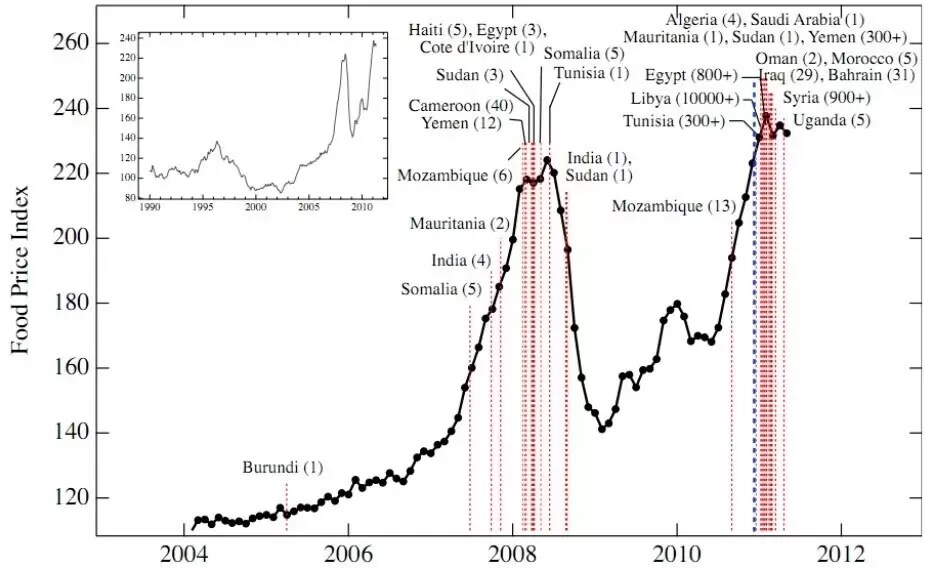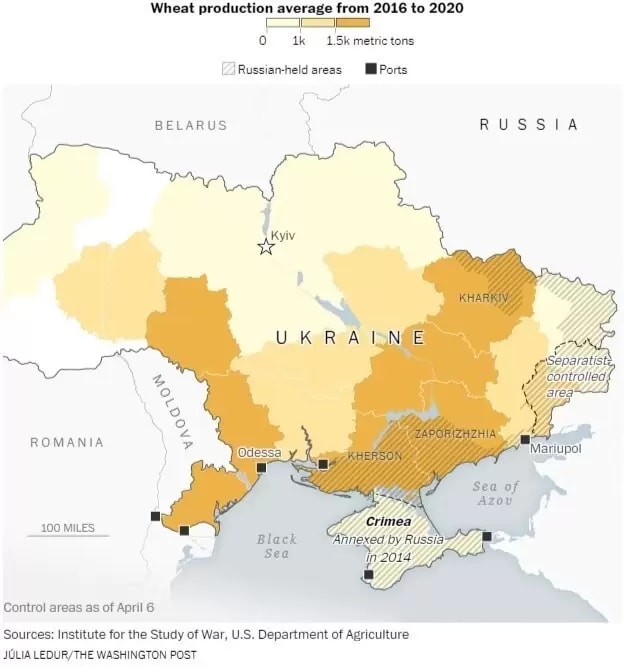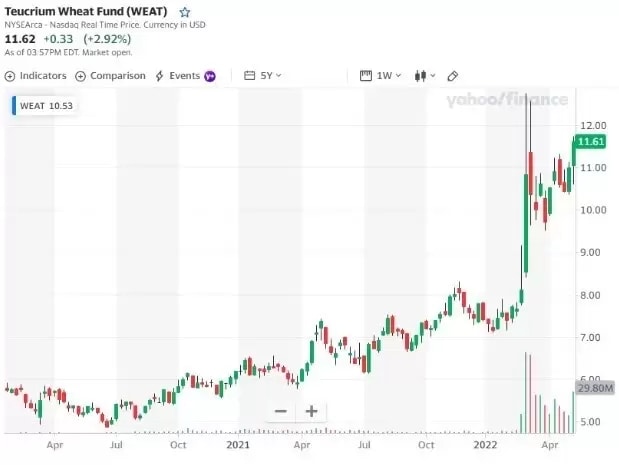The effects of coronavirus, inflation, and supply chain disruptions are being felt around the globe, with political unrest on the rise and consumer prices for food and energy spiralling out of control.
Russia’s invasion of Ukraine has exacerbated the issue of soaring prices. History suggests that huge price increases for basic food commodities can have not only a deep economic impact, but can also foreshadow far-reaching political and social upheaval, often lasting longer than one growing season.
The impact of war
Russia’s invasion of Ukraine may end up being a catalyst that leads to further political instability in every corner of the globe. Ukraine is responsible for producing up to 7% of all wheat worldwide and is the largest provider of the commodity to North Africa and the Middle East, parts of which lack the arability to produce wheat domestically. Egypt imports nearly 80% of its wheat from Russia and Ukraine.
To understand the potential long-term impact of the current geopolitical stresses, it is important to recall the self-immolation of a 26-year-old street vendor named Mohamed Bouazizi in Tunisia in December 2010. Bouazizi’s public demonstration would go on to spark a series of events that became known as the Arab Spring, a wave of anti-government protests and uprisings throughout North Africa and the Middle East.
The Arab Spring spread through Yemen, Bahrain, Libya, Syria, Algeria, Jordan, Morocco, and Oman. This wave of demonstrations was largely the result of abysmal public policy from long-term authoritarian regimes, objectively low quality of living, and unaffordable food prices.
When food prices rise, people take to the streets
Yaneer Bar-Yam’s team from the New England Complex Systems Institute (NECSI) observed the correlation between global food price peaks from 2007 and the violent uprisings in North Africa and the Middle East from 2010, and reported their findings to the US Government, anticipating that further revolts could be about to take place.

The vertical blue line above indicates the date that NECSI notified the US Government of their findings, with each vertical red line indicating an individual uprising and the number in parentheses representing the estimated death toll from each. This report was initially made just four days prior to Tunisia’s Jasmine Revolution that went on to influence similar uprisings in the region.
The simple takeaway is that when food prices become unaffordable for people in politically unstable and impoverished countries, those populations are significantly more likely to revolt and protest.
Bar-Yam’s team also noted that the drive to shift some corn supply from food to ethanol, along with commodities de-regulation in the United States over the last couple of decades, exacerbated the middle eastern food crisis and the Arab Spring revolts.
Once again, we’re now seeing global strains on the supply of crude oil and major food inflation due to supply chain shortages and disruptions. Given the issues affecting oil supply, one could logically expect policymakers to divert grain resources to fuel production. Time will tell whether history is about to repeat itself.
Damage to Ukraine
The disruption to Ukraine’s agriculture industry is obvious, with a large swath of the country’s most productive agricultural regions being annexed or destroyed by Russia.

Although Ukraine reported record wheat production last year, the destruction of supply routes such as bridges, train tracks, and ports has left the country with a stockpile of the commodity that they may be unable to export. The primary disruption for Ukraine’s wheat trade has been in the Black Sea as Russian forces have essentially blockaded the primary route between Ukraine and the Middle East.
Are we entering a new commodity super-cycle?
It's the nature of commodities in general, and certainly food commodities, that we cannot instantly produce more. Farmers have to acquire seeds and plant them during specific time frames. Wheat takes months to grow, requiring several applications of fertilizer or pesticides. Harvesting can be very time-sensitive, while storing and bringing the wheat to international markets requires time and functioning supply chains. The spring planting season has already been disrupted and it's impossible to know how many upcoming planting seasons will be disrupted.

The chart above shows the price of Teucrium Wheat Fund over the last two years. Prices rose post-pandemic, then surged following Russia’s invasion of Ukraine. Given the complexity of the global food supply chain, the war in Ukraine, and the possibility for further economic and political fallout, commodities like wheat are likely to remain in short supply and we could see prices continue to trend higher.
Commodities have been out of favour for many years, as supply has increased, prices have fallen, and supply chains have become more efficient. Now, with inflation on the rise, global supply chains stretched to breaking point, and major suppliers disrupted by geopolitical conflict, we may be at the beginning of the next commodity super-cycle.
You can read more of Mish's market analysis here or visit marketgauge.com.




